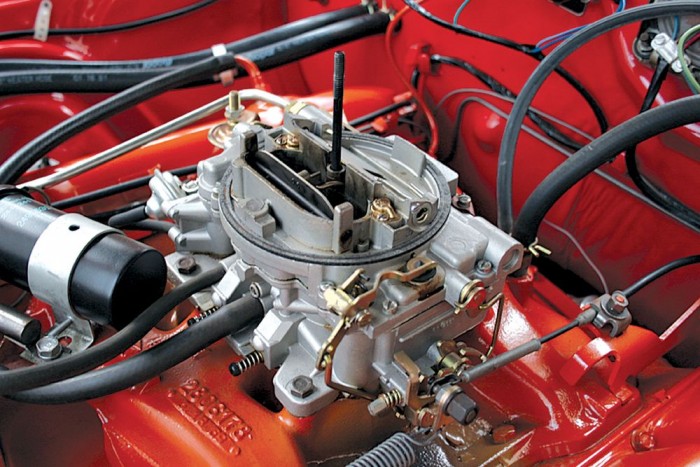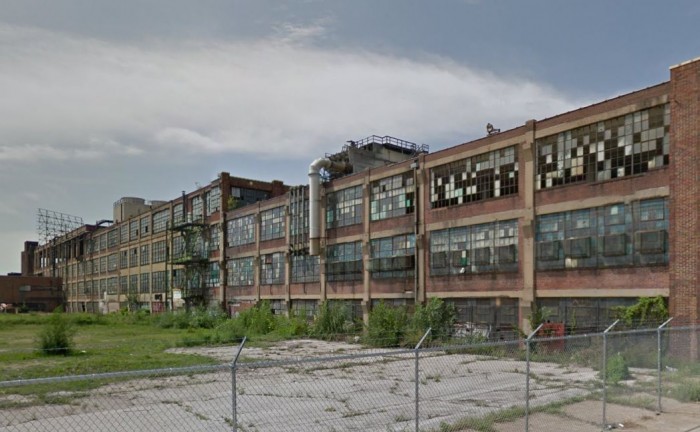Demolition of Carter Carburetor factory in St. Louis begins
Posted on Jun 3, 2020 in Featured | 2 comments

Image via Google Maps.
For decades, Carter remained a cornerstone of the carburetor industry, supplying many of the major carmakers, but then the adoption of electronic fuel injection wiped the company out nearly overnight. For 30-plus years, the old Carter Carburetor factory has sat empty, an admonition to the intractable, until this week, when the cleanup of the site began in earnest with the St. Louis factory’s demolition.
Founder William Carter didn’t remain with his carburetor company all that long, in the grand scheme of things. He began his carburetor development in 1902, at the age of 18, and seven years later founded Carter Carburetor, claiming to provide the most accurate carburetors—thanks to his precision molding techniques—at a time when the practice of mixing air and fuel more resembled magic than science. Various sources have also credited Carter with developing the choke valve for carburetors and the downdraft carburetor design.
The factory came six years later, in 1915. Designed by renowned St. Louis architect Hugo K. Graf—who would also later design the Carter Carburetor office building and whose other buildings have gone on to inclusion in the National Register of Historic Places—the four-story, 480,000-square-foot factory on the 10-acre site on North Spring Avenue in North St. Louis, just across the street from the stadium where the St. Louis Browns played, illustrated just how important a supplier Carter had become to the automobile industry.

Carter AVS in a 1970 1969 Dodge Charger Daytona. Photo by the author.
While Carter is best known for supplying Chevrolet, Buick, Oldsmobile, and later Chrysler, the company also built carburetors for Packard and Hupmobile, among many others. William Carter, however, bowed from the company in 1924 after he sold it to American Car and Foundry Company, a railcar conglomerate formed in 1899 that had started to diversify into automotive suppliers in the mid-1920s.
Carter operated as a standalone unit within ACF for the next 60 years, during which time it employed as many as 3,000 people and introduced the first four-barrel carburetor (the 385-CFM WCFB, introduced on Buick’s straight-eight in 1952) as well as the World War II Jeep’s waterproofed Y-S single-barrel carburetor.
But by the early 1980s, as automakers switched over from carburetors to electronic fuel injection, Carter’s business began to erode. The company’s only apparent attempt to diversify was in the form of aftermarket fuel filters, hardly a line that would sustain it. ACF shut down Carter Carburetor and shuttered the St. Louis factory in 1984; the last OEM use of a Carter carburetor was in the Jeep Wrangler in 1990, likely built by another company that obtained the Carter molds.

Image via Google Maps.
Nor was that the end of ACF’s troubles. Three years after ACF closed the plant, the Environmental Protection Agency found polychlorinated biphenyls on the site, left over from the hydraulic fluid used in the die cast machines that William Carter had worked so hard to perfect, enough to declare the plant a Superfund site.
In addition, the EPA would later find trichloroethylene and asbestos throughout and in the soil underneath the plant, the former used as a degreaser for the carburetors. Some of the PCBs and TCEs were found as far as 20 to 25 feet underground, as far as the bedrock in the area, according to the St. Louis Post-Dispatch.
Legal wrangling over who would clean the site up ensued for decades and only came to a resolution in July 2013, when the EPA reached a $30 million cleanup agreement with ACF and the company that controlled the site.
While contractors hired by ACF had already removed windows and asbestos to prepare the site for demolition over the last several months, the EPA announced last week that demolition of the factory would begin Monday, with the remnants of the factory and the soil underneath it to be hauled away for treatment and decontamination. Demolition—by wrecking ball rather than explosives—is expected to last through April 2016; cleanup is expected to extend into late 2017.
No post-cleanup plans for the site have been announced, though the St. Louis Business Journal noted that the Boys & Girls Clubs of Greater St. Louis has an option to buy all or part of the site once work is finished.





.gif)


The end of yet another era. When one looks at the sad state of the neglected building, you can’t help but think about how many Amercian workers were gainfully employed there and how they struggled to provide for a growing family perhaps. Think of the good times and the camaraderie. It’s all gone.
It’s not really gone. It’s simply gone elsewhere. What’s happened in America is simply a larger version of what’s happened in Australia and all other first world countries.